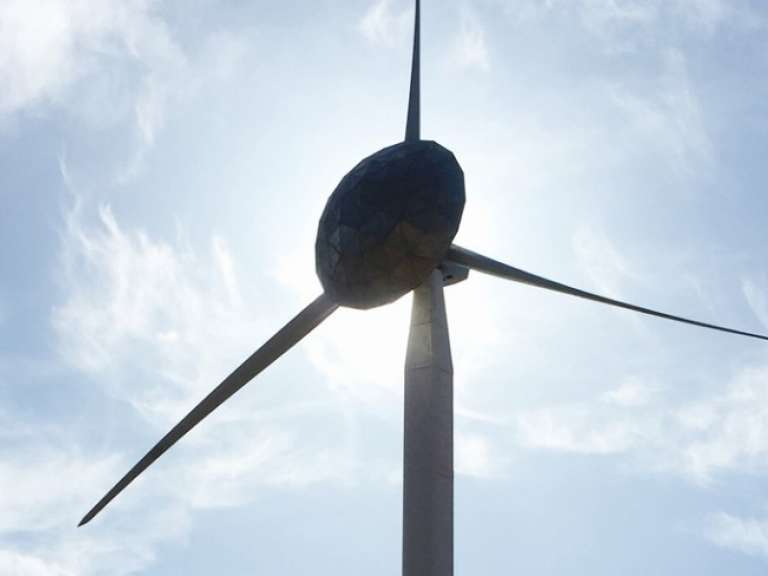The Cost of Wind Energy: The Impact of Dropping Prices
Peter Kelly-DetwilerWith the rapid pace of technological advances, the cost of wind energy continues to drop. But with those drops also come several challenges and issues.

The cost of wind energy across the United States continues to fall as technologies relentlessly continue to improve. Technological advances are occurring across the board, from taller towers and longer, stronger blades to better controls and gearboxes, improved forecasting capabilities, and better IT planning tools. These developments increase the amount of energy harvested from the available wind, leading average capacity factors to double in the decade between 2004 and 2014, according to Renewable Energy World. Improved technology will continue to drive down costs.
In some regions, wind is already quite a considerable resource. This is most pronounced in the middle part of the continent, where the wind is steadiest, from Wyoming to Texas. Wind adoption will continue to increase as the resource gets further built out. According to the American Wind Energy Association, 82,100 MW of wind already exists in the U.S., with an additional 10,400 MW under construction and 7,900 MW in advanced development as of early 2017.
With the low marginal generating cost of wind energy, average hourly clearing prices in many regions are under $30 per megawatt-hour (MWh). According to a recent Lawrence Berkeley National Labs (LBNL) report, longer-term contracts now hover around $20 per MWh. This price is down from around $70 per MWh just seven or eight years ago. The most inexpensive contracts emanate in the wind-rich center of the country, and, according to LBNL, recently signed contracts "compare favorably to projections of the fuel costs of gas-fired generation ... through 2040." Northeastern regions may see higher costs, but with technological advances, prices will eventually fall there as well.
Today's contracts are bolstered by a $23-per-MWh federal production tax credit (PTC), which gives wind a big advantage over conventional generation. However, even when the PTC expires at the end of 2019, the price pressure from the wind resource is likely to remain. Technology is advancing globally — so fast that James Robo, CEO of leading wind project developer NextEra, expects a "step function" to occur. According to a 2016 Q4 earnings call transcript published on Seeking Alpha, Robo expects that by 2020, wind energy without PTCs will fall within a $20-$30 per MWh range.
These prices, combined with the intermittent nature of wind, pose a real challenge for grid operators for two main reasons.
First, the intermittency means that conventional resources must stand ready to back up wind and solar power, even though they operate during fewer hours. Second, the low marginal costs of wind depress clearing prices and margins for conventional coal and gas-fired generation, as well as nuclear plants. This is most pronounced in the Midwest and Texas, but is now being felt in regions such as upstate New York and New England, where more wind is coming online.
At a recent conference panel, executives of four major grid operators (MISO, ERCOT, NYISO, and ISO-NE) described these issues as being among the most critical challenges to the grid today and for the foreseeable future. Specifically, the issue of price formation — the availability of sufficient financial incentive for traditional fossil generation (mostly gas-fired plants) to remain in business — is a topic of intense discussion. The general concern is that incentives may be inadequate in the current environment, and market rules may have to change in order to compensate conventional generation for playing a critical new role in maintaining reliability.
For fleet operators, this raises three essential questions:
1) Can their assets operate effectively within this environment, where the traditional dispatch order has changed and low marginal-cost renewables are now dispatched lower in the stack? In this case, gas plants operate for fewer hours and often have to rely more on revenue from ancillary services.
2) Are the markets sufficiently structured with the right incentives, so that this mode of operation is profitable?
3) If this is not the case, is there potential relief on the horizon?
Presently, this answer may vary by region. In New England, for example, "pay for performance" capacity prices for new resources are visible for seven years, while existing resources can see prices three years out. By contrast, PJM provides three-year visibility for all resources, while New York only offers a six-month view. For its part, ERCOT currently has no capacity market at all.
As additional low-cost wind resources continue to be developed, these issues will become even more intense. According to ISO, New England is looking at as much as 6,000 MW of proposed wind projects on a 30,500 MW system, while ERCOT expects to add 5,000 MW within the next few years.
It is, therefore, imperative for fleet owners to understand the economics and operating capabilities of their individual assets and regional fleets, and develop plans accordingly. The most intelligent companies with the most flexible and efficient plants are the ones likely to survive in this withering price environment. However one looks at it, though, the next few years will prove very challenging.
Will the responsibility of intermittent energy source balancing fall primarily on batteries and energy storage, or can digitized thermal power plants take on some of the task?
The EIA estimated that coal will overtake natural gas in power production this winter. Are these simply seasonal power generation trends?
Smart appliances, electric vehicles, and the smart grid will all play a vital role in consumer energy demand management.